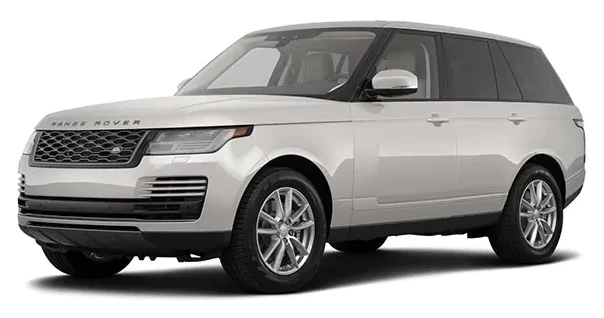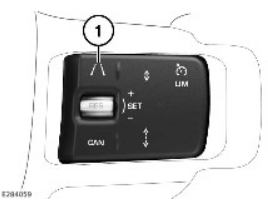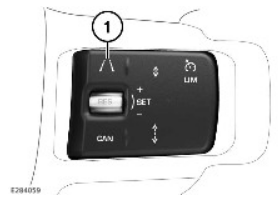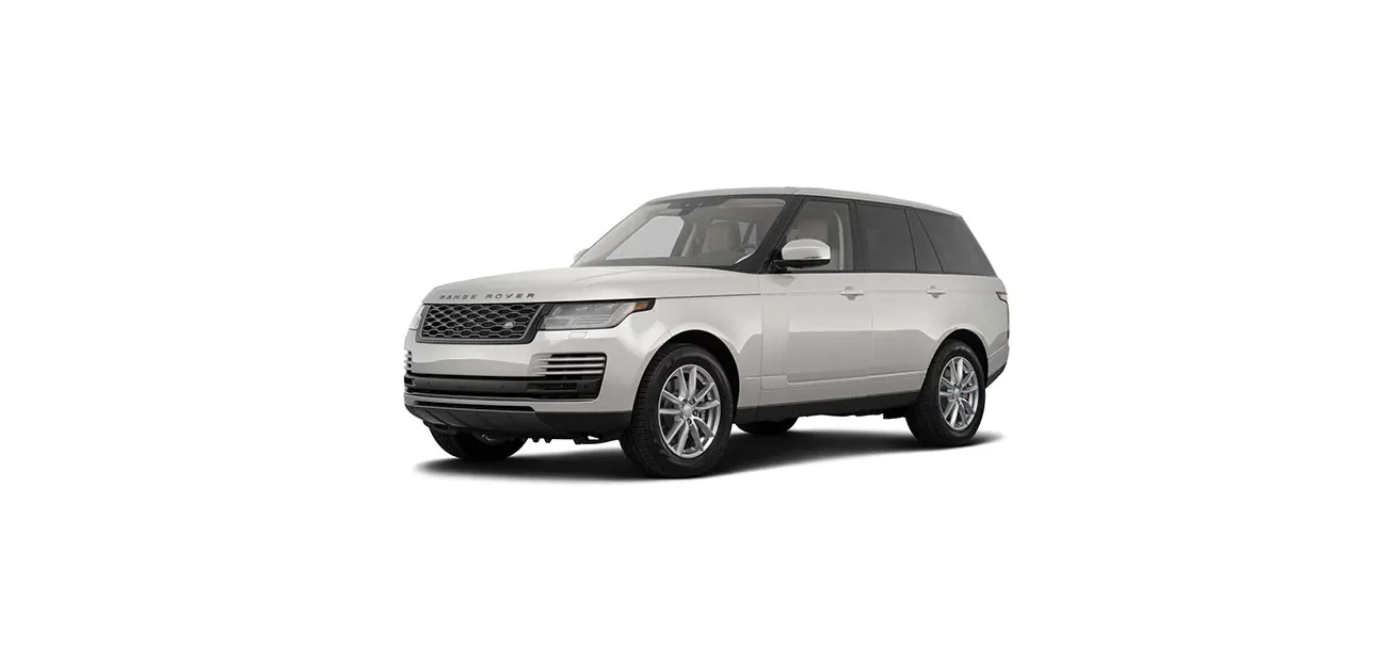2022 Land Rover New Range Rover Driving Aids

DRIVING AIDS SAFETY
Make sure the following warnings have been read and fully understood before using a driving aid system. Failure to use the driving aids safely could result in an accident, leading to serious injury or death.
Despite the vehicle being fitted with driving aids, the driver is still responsible for driving with due care and attention. The driver should also observe all road markings. Only drive in a manner that is safe for the vehicle, its occupants, and other road users.
Driving aids are a supplement to, not a replacement for, a safe driving style.
Always use the door and rear-view mirrors. Drive safely at all times, and use the door and rear-view mirrors to help avoid accidents.
Driving aids may not function at all speeds, or in all weather conditions.
Driving aids do not correct errors of judgment when driving.
The sensors and cameras used by the driving aids may become impaired by mud, rain, frost, ice, snow, or road spray. The driving aids’ ability to detect a risk may subsequently be affected and may give false indications.
Do not attach stickers or objects to the rear bumper or to the windshield. Operation of the sensors and camera may subsequently become impaired. The driving aids’ ability to detect a risk may subsequently be affected and may give false indications.
Do not attach stickers or other objects to the door mirrors, as the blind spot icons and indicators may become obscured. Obscuring the icons and indicators could cause system miscalculations and increase the risk of a collision during a vehicle maneuver.
The performance of the lane aid systems is affected by tire pressures and steering alignment. Constant steering adjustment may be required if the tire pressures are low, or if the steering is out of alignment. Constant steering adjustment increases the risk of an accident. Check the tire pressures regularly. Consult a retailer/authorized repairer if it is believed that the steering is out of alignment.
LANE KEEP ASSIST (LKA)
Make sure the relevant safety warnings have been read and understood before driving the vehicle. See DRIVING AIDS SAFETY. Lane Keep Assist (LKA) monitors the road lane markings in order to be able to detect an unintentional road lane departure. If the vehicle is about to cross a lane boundary, a rotational force is applied to the steering wheel to counter the lane boundary crossing. The instrument panel displays a warning icon when a rotational force is applied to the steering wheel.
The LKA system does not assist the driver if road lane markings tracking is not available.

The Lane Keep Assist (LKA) system can be switched on and off via the driver assistance button (1). The button icon illuminates green when the LKA system is switched on.
The driver assistance button (1) also controls the operation of the Blind Spot Assist (BSA) system. See BLIND SPOT ASSIST.
The LKA system selection is retained in the vehicle’s memory after the vehicle is switched off.
The instrument panel displays an icon when the LKA system is switched on. The icon changes color as follows:
- Gray lines indicate:
The lane boundaries are not being tracked.
The driver is indicating on the same side.
NOTESWhen indicating left, the left side only is grayed out. The same strategy applies when indicating right.
One or more of the system limitations criteria may have been met. See LANE KEEP ASSIST (LKA) LIMITATIONS.
- Green lines indicate that the line markings are being tracked.
- Red lines indicate when the LKA feature is intervening.
The same LKA icon information can also be viewed via the Driver Assistance instrument panel view. See CONFIGURING THE INSTRUMENT PANEL.
The Driver Assistance view displays the same LKA icon information via an enhanced graphic.
The same LKA icon information can be displayed in the Head Up Display (HUD).
LANE KEEP ASSIST (LKA) LIMITATIONS
The Lane Keep Assist (LKA) system is not active when:
- The vehicle is not in forwarding gear.
- The vehicle’s speed is approximately below 40 mph (64 km/h) or above 112 mph (180 km/h).
- Driving in single lanes narrower than approximately 10 ft (3 m) or wider than approximately 13 ft (4 m).
- Turning in tight road bends.
- The windshield area in front of the rear-view mirror becomes blocked. For example, stickers, mud, snow, or debris.
- A fault occurs in the system.
The LKA system does not intervene if:
- The road edges are unmarked.
- The road lines are not available, in poor condition, or not detected by the system.
- Dynamic Stability Control (DSC) is operating.
- Anti-lock Braking System (ABS) is operating.
- The brake pedal is pressed.
- A turn signal is being used.
- The driver has applied a counter steering input that is greater than the steering input from the LKA system.
- The LKA system performance may be significantly degraded in adverse weather conditions. For example, heavy fog, rain, or snow.
- The instrument panel displays messages to inform the driver of any system issues.
If a system fault has been detected with the instrument panel or Head-Up Display (HUD), the LKA continues to operate as intended.
EMERGENCY LANE KEEPS ASSIST
Make sure the relevant safety warnings have been read and understood before driving the vehicle. See DRIVING AIDS SAFETY.
Make sure the Emergency Lane Keep Assist (ELKA) system is switched off before driving off-road.
The ELKA system automatically switches on every time the vehicle’s electrical system is switched on.
The Emergency Lane Keep Assist (ELKA) system attempts to provide corrective steering inputs if it determines the following:
- The vehicle is getting too close to horizontal road edges. For example, grass, mud, and snow.
- The vehicle is drifting towards the adjacent lane where oncoming vehicles are detected.
ELKA operates irrespective of the use of the turn signals.
The ELKA system can be switched on or off via the touchscreen. To switch the system on or off, complete the following steps:
- Touch the settings icon from any screen. See SYSTEM SETTINGS.
- Select Vehicle.
- Select Driver Assistance.
- Select Collision avoidance.
- Emergency lane keeping: Touch to switch the toggle on or off.

The instrument panel displays visual warnings to inform the driver in the event of an ELKA intervention. In the case of ELKA oncoming interventions, in addition to the warning icon, the instrument panel provides an audio chime and a textual message.
The Head-Up Display also displays a warning.
EMERGENCY LANE KEEPS ASSIST LIMITATIONS
ELKA feature detecting oncoming vehicles is only operational when detecting oncoming vehicles in adjacent road lanes.
The Emergency Lane Keep Assist (ELKA) system is not active when:
- The vehicle is not in forwarding gear.
- The vehicle’s speed is approximate:
Below 40 mph (64 km/h) or above 112 mph (180 km/h) when ELKA is detecting road edges.
Below 40 mph (64 km/h) or above 75 mph (120 km/h) when ELKA is detecting oncoming vehicles.
- Driving in single lanes narrower than approximately 10 ft (3 m) or wider than approximately 13 ft (4 m).
- Turning in tight road bends.
- The windshield area in front of the rear-view mirror becomes blocked. For example, stickers, mud, snow, or debris.
- The road edges are not detected or the line marking delimiting the two adjacent lanes is not detected (oncoming vehicles scenarios).
- A fault occurs in the system.
The ELKA system does not intervene if:
- Dynamic Stability Control (DSC) is operating.
- Anti-lock Braking System (ABS) is operating.
- The brake pedal is pressed.
- The driver has applied a counter steering input that is greater than the steering input from the ELKA system.
The ELKA system performance may be significantly degraded in adverse weather conditions. For example, heavy fog, rain, or snow.
The instrument panel displays messages to inform the driver of any system issues.
NOTES
If a system fault has been detected with the instrument panel or Head-Up Display (HUD), the ELKA continues to operate as intended.
DRIVER CONDITION MONITOR
Make sure the relevant safety warnings have been read and understood before driving the vehicle. See DRIVING AIDS SAFETY.
The driver condition monitor feature continuously evaluates driving technique for signs of fatigue. The feature determines fatigue on two levels:
- Fatigued.
- Highly fatigued.
In the event of the driver becoming fatigued:
The instrument panel displays a white icon. The instrument panel also emits a chime.
The driver condition monitor feature may warn the driver every five minutes if the driver continues to be fatigued.
- After 30 seconds the fatigued white icon extinguishes automatically.
- In the event of the driver becoming highly fatigued
- The instrument panel displays an amber icon. The instrument panel also emits a chime.
- The driver condition monitor feature may warn the driver every five minutes if the driver continues to be highly fatigued.
The highly fatigued amber icon remains displayed until the driver has acknowledged the warning.
The driver condition monitor feature can be switched on or off via the touchscreen. To switch the feature on or off, complete the following steps:
- Touch the settings icon from any screen. See SYSTEM SETTINGS.
- Select Vehicle.
- Select Driver Assistance.
- Select Driver condition monitor.
- Driver fatigue alert: Touch to switch the toggle on or off.
- The Driver fatigue alert setting always returns to its default state ON, after the vehicle is switched off, even if the driver disabled the feature.
- The driver condition monitor feature can also find nearby rest areas, if selected, for when the driver becomes fatigued.
- The instrument panel notifies the driver that rest areas are available nearby. The rest areas display on the touchscreen.
- To switch the feature on or off, complete the following steps:
- Touch the settings icon from any screen. See SYSTEM SETTINGS.
- Select Vehicle.
- Select Driver Assistance.
- Select Driver condition monitor.
- Find rest areas: Touch to switch the toggle on or off.
The Find rest areas feature selection is retained in the vehicle’s memory after the vehicle is switched off.
DRIVER CONDITION MONITOR LIMITATIONS
The driver condition monitor feature is not active when the vehicle’s speed is below 37 mph (60 km/h) or above 112 mph (180 km/h).
DRIVER CONDITION RESPONSE
Make sure the relevant safety warnings have been read and understood before driving the vehicle. See DRIVING AIDS SAFETY.
The driver condition response feature is an emergency stop function. Deliberate activation of the feature is prohibited.
The driver condition response feature brings the vehicle to a stop when the driver has not re-engaged in the driving task after multiple requests from the instrument panel.
The driver condition response feature activates when:
- Using the adaptive cruise control with lane centering system for too long without hands on the steering wheel. See STEERING ASSIST.
- Having too many consecutive interventions without hands on the steering wheel when using the Lane Keep Assist (LKA) system. See LANE KEEP ASSIST (LKA).
When active the driver condition response feature aids the driver with the following:
- The instrument panel provides visual and audio warnings to inform the driver to take control of the vehicle.
- The hazard lights are activated to warn other road users.
- Begins to inhibit the vehicle’s acceleration.
- Autonomously applies the brakes sharply three times as a final attempt to re-engage the driver, then decelerate the vehicle to a stop.
- Provide steering wheel lane centering support, where possible.
When the vehicle is stationary and secure the driver condition response feature applies the following:
- Park brake.
- Park (P).
- Provide instructions on the vehicle touchscreen for how to perform an SOS Emergency Call. See SOS EMERGENCY CALL.
The driver can override the driver condition response feature using any of the following:
- Apply hands back onto the steering wheel or steering torque applied, and accelerator pedal input.
- Apply hands back onto the steering wheel or steering torque applied, and brake pedal input.
- Pressing the accelerator pedal all the way down to the floor.
- Push and hold the driver assistance button (1).

DRIVER CONDITION RESPONSE LIMITATIONS
The driver condition response does not provide lateral support if:
- The camera is obscured, for example by stickers, mud, snow, or debris.
- Driving in single lanes is narrower than approximately 8 ft (2.5 m) or wider than approximately 16 ft (5 m).
- Turning in tight road bends.
- The road edges are not detected or the line marking delimiting the two adjacent lanes is not detected.
The driver condition response lateral support operates with a reduced level of performance and accuracy if:
- The operation of the camera is impaired due to severe weather conditions. For example, heavy rain, fog, snow, ice, or extreme sunlight.
- The road edges or the line markings are not detected on both sides of the lane in which the vehicle is traveling.
- There is unintentional contact with the steering wheel.
If a system fault has been detected, the driver condition response function does not operate.
TRAFFIC SIGN RECOGNITION
Make sure the relevant safety warnings have been read and understood before driving the vehicle. See DRIVING AIDS SAFETY.
The traffic sign recognition system is a driving aid only. The responsibility remains with the driver to follow the legal road speed limits.
The traffic sign recognition system’s default state is on and cannot be disabled. The traffic sign recognition system uses a forward-facing camera located in the rear-view mirror and the vehicle’s navigation map data. The camera detects speed signs, no overtaking signs, and variable overhead speed signs.

The instrument panel displays symbols of recognized traffic signs. If no speed limit signs are visible, the instrument panel displays speed limit information taken from the navigation system.
The traffic sign recognition system also allows the driver to set a speed limit alert, e.g., when the vehicle speed goes past the speed limit set by the driver.
To access the speed limit alert menu, complete the following steps:
- Touch the settings icon from any screen. See TOUCHSCREEN DISPLAY SETTINGS.
- Select Vehicle.
- Select Driver Assistance.
- Select Cruise and speed assistance.
- Speed limit warning: Touch to select the required setting:
- Off.
- At limit.
- Limit + 3 mph (5 km/h).
- Limit + 5 mph (10 km/h).
TRAFFIC SIGN RECOGNITION LIMITATIONS
The traffic sign recognition system does not operate to the optimum performance if the windshield area in front of the rear-view mirror becomes blocked. For example, stickers, mud, snow, or debris. The traffic sign recognition continues to operate using the vehicle’s navigation map information. In the event that the traffic sign recognition system becomes unavailable, the speed limit alert feature also becomes unavailable.
The traffic sign recognition system:
- Does not perform to the best of its ability in adverse weather conditions. For example, heavy fog, rain, or snow.
- May not perform, or may perform incorrectly, when the vehicle is traveling through an area not covered by the navigation system.
- May function incorrectly when driving toward bright lights.
- May not recognize concealed, covered, or non-conforming road signs.
- May not perform to the best of its ability if the navigation maps are out of date.
The instrument panel displays messages to inform the driver if the forward-facing camera is blocked.

